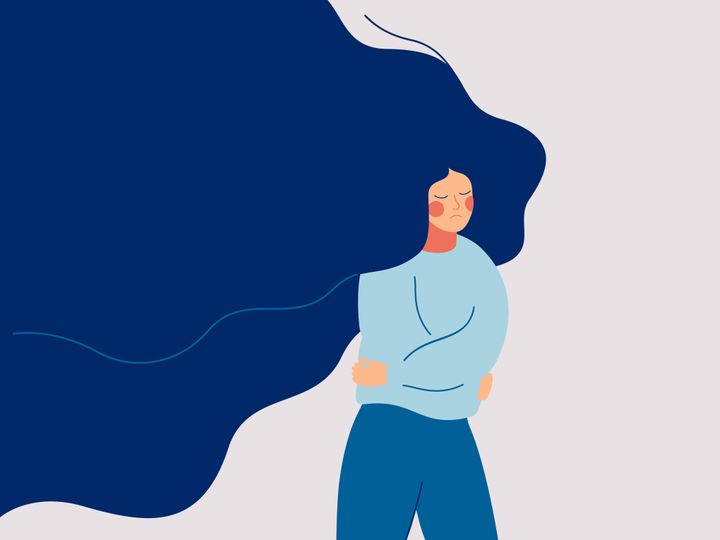
Around three million people in the UK are thought to live with an anxiety disorder. For these people, seemingly unthreatening life events or situations can spark a debilitating fear that leaves them in a state of fight or flight. This can be terrifying and seriously impact day-to-day life.
Typically, cognitive behavioural therapy (CBT), and sometimes antidepressants, are offered to those struggling with anxiety – but some people do not find sufficient relief from these therapies.
Researchers at Yale University and Weill Cornell Medicine believe there is a novel way that could help combat such anxiety, particularly for those who don’t find existing therapies working. When life triggers excessive fear, use a safety signal, they suggest.
A safety signal could be a musical piece, a person, or even an item like a stuffed animal that represents the absence of threat, explained Paola Odriozola, the study’s author and a PhD candidate in psychology at Yale.
If the symbol or sound is not associated with a negative event, it can relieve a person’s anxiety through an entirely different brain network than the one activated by existing behavioural therapy, their findings suggest.
Laura Peters, head of advice and information at Rethink Mental Illness, told HuffPost UK: “New innovations that improve the way we treat mental illness are to be supported.” She added: “Having more options available may help people to find the combination of treatments that’s right for them.”
While talking therapies and antidepressants are effective for many people living with anxiety, said Peters, treatments affect everyone differently, and there are often side effects to medication that can make things more difficult.
In some forms of behavioural therapy, patients are slowly exposed to the source of their fear, such as spiders, until they learn that spiders do not represent a significant threat and their anxiety is decreased. But for some people, exposure-based therapy does not seem to help – and this study may explain why.
The new research used both mice and human subjects, who were conditioned to associate one shape with a threatening outcome and a different shape with a non-threatening outcome. In mice, sounds were used in the conditioning instead of shapes.
The shape associated with threat alone was presented to subjects, and later, subjects viewed both threatening and non-threatening shapes together.
Researchers discovered that adding the non-threatening shape, aka the safety signal, suppressed the subjects’ fear compared to the response to the threat-related shape alone.
Brain imaging studies of both humans and mice showed the non-threatening shape approach activated a different neural network than the exposure therapy, suggesting that “safety signalling” might be a way to improve current therapies.
Dylan Gee, assistant professor of psychology at Yale and the study’s co-author, said: “Exposure-based therapy relies on fear extinction, and although a safety memory is formed during therapy, it is always competing with the previous threat memory. This competition makes current therapies subject to the relapse of fear – but there is never a threat memory associated with safety signals.”
Gee stressed the need for alternatives for those suffering from anxiety-related disorders. “Both cognitive behavioural therapy and antidepressants can be highly effective, but a substantial part of the population does not benefit sufficiently, or the benefits they experience don’t hold up in the longer term,” she said.
Odriozola told us in an email: “Much more work needs to be done to test the efficacy of the approach, but the need for alternatives for those suffering from anxiety-related disorders is great. The present study does not provide any specifics as to how to implement safety learning into treatment, but is an important first step towards rethinking safety as potentially beneficial in treatment.”
A Mental Health Foundation spokesperson welcomed the study, telling HuffPost UK: “Millions of people in the UK experience anxiety or are distressed by phobias. Although drug treatments and psychological therapies help many, we know that tranquilisers can be over-prescribed and that waiting lists for CBT can be long. These interventions don’t work for everyone.”
There are a number of things that people can do to help themselves or friends and family, they added. “Anything that enables people to help themselves quickly and safely is welcome and worth exploring further.”
Useful websites and helplines:
- Mind, open Monday to Friday, 9am-6pm on 0300 123 3393
- Samaritans offers a listening service which is open 24 hours a day, on 116 123 (UK and ROI - this number is FREE to call and will not appear on your phone bill.)
- The Mix is a free support service for people under 25. Call 0808 808 4994 or email: help@themix.org.uk
- Rethink Mental Illness offers practical help through its advice line which can be reached on 0300 5000 927 (open Monday to Friday 10am-4pm). More info can be found on www.rethink.org.